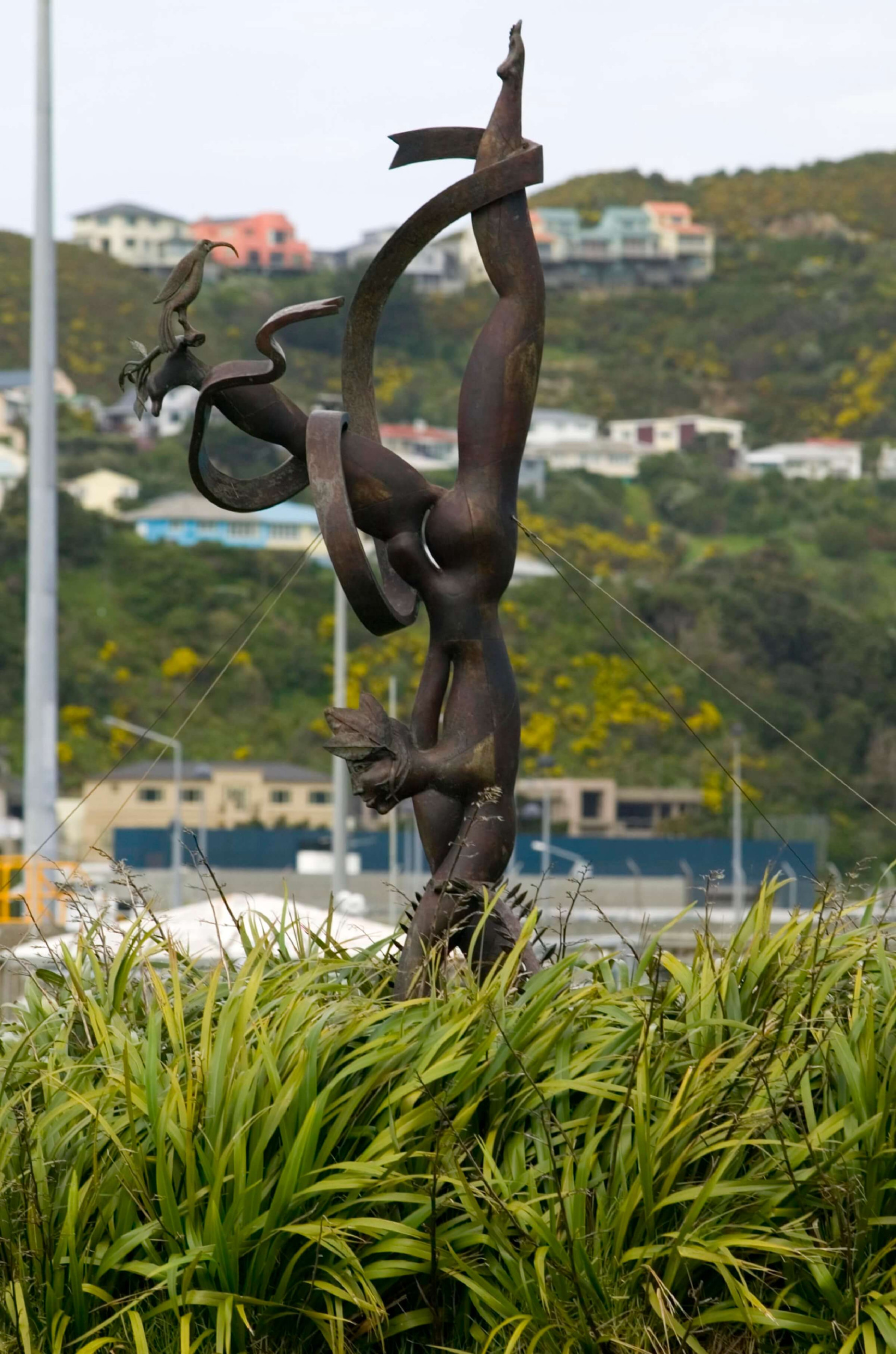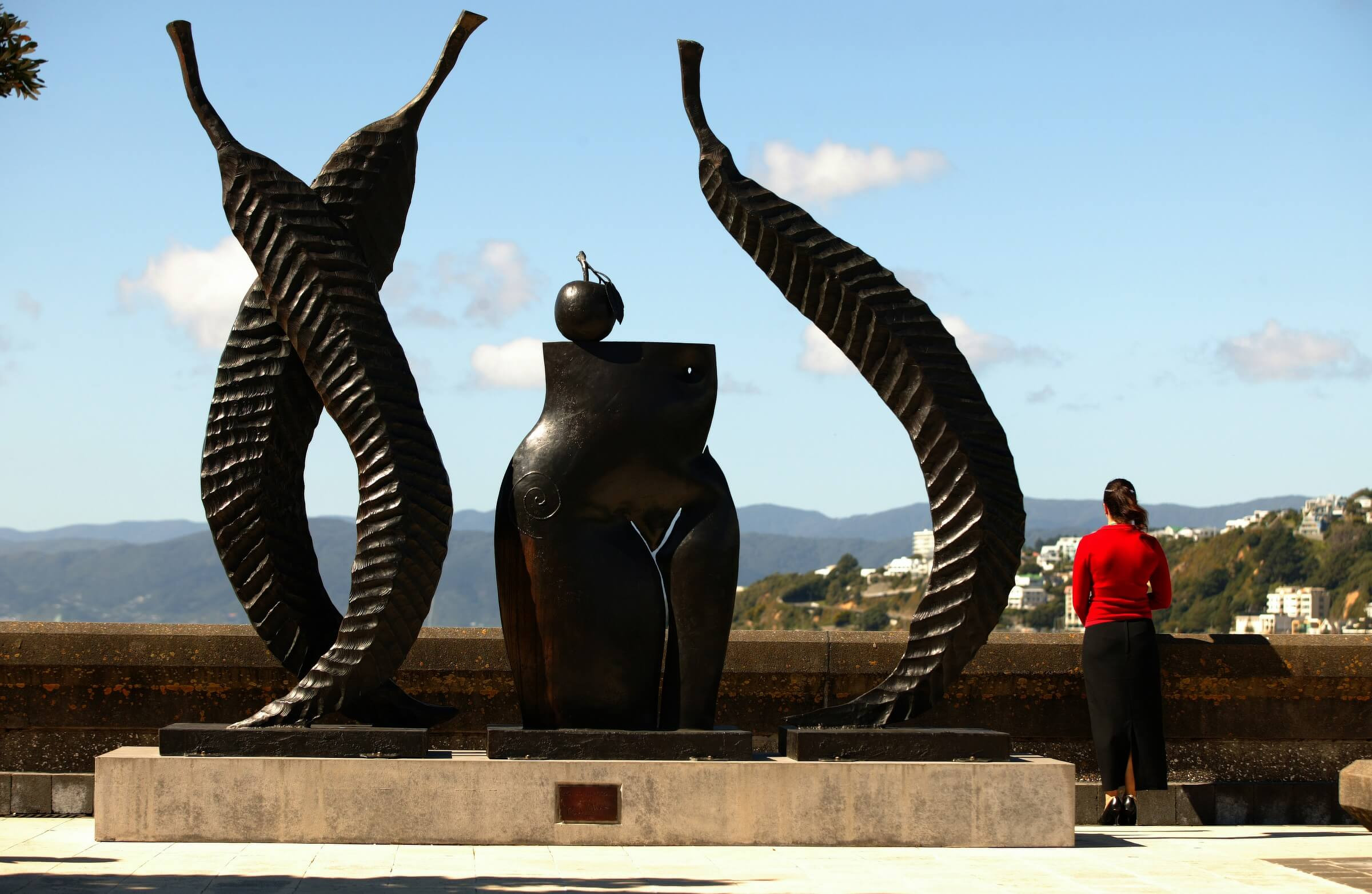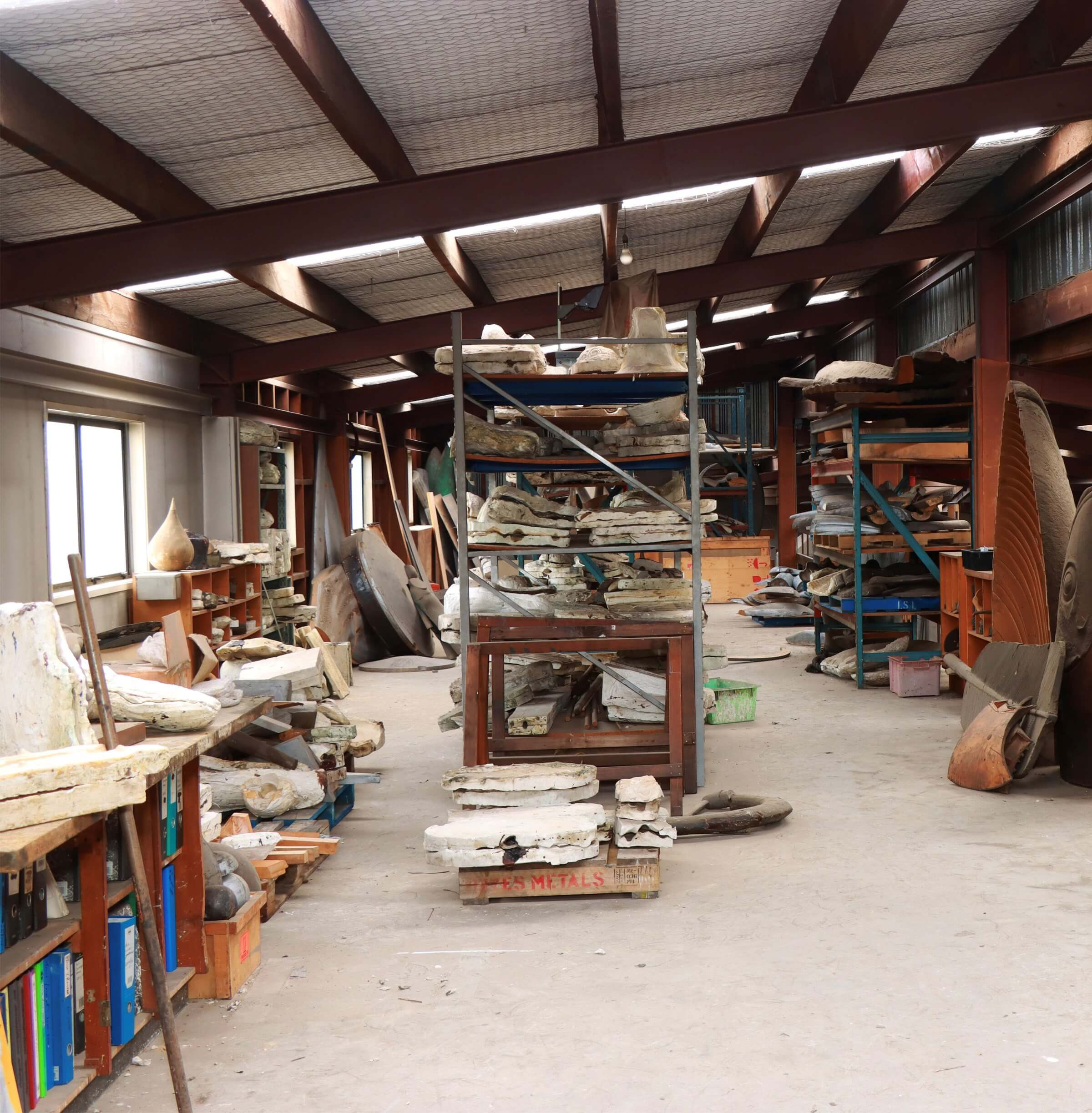Visit Sculptures in Wellington
Visit Sculptures in WellingtonFantail on Ring, 2010
Location: roundabout at the junction of Pine Avenue and Main Street, Upper Hutt
Woodpigeon on Ring, 2010
Location: roundabout at the junction of King Street and Main Street, Upper Hutt
The Upper Hutt City Council commissioned Fantail on Ring and Woodpigeon on Ring as part of a centre city revitalisation project. Native birds seemed a fitting emblem in a city located in a geographical area with a large content of native bush. For Dibble the sculptures were part of a series of works that celebrated the return of birds to cities, as the result of environmental efforts and the planting of natives.
The birds are caricatures, in Dibble’s classic semi-relief styling, not in the round (as in a realistic depiction), for although they seem large they are in fact only thin shapes.
This unusual form is easily accepted by the viewer; indeed, it makes the characters of the birds, and what makes them so beloved, more pronounced – the woodpigeon (kererū) still and peaceful, the fantail (pīwakawaka) jaunty and flitting.
The birds are positioned on large circles; above eye level, so they don’t impede traffic. The simplicity of the circle gives the works an elegance, the exacting geometry contrasting with the modelled forms.
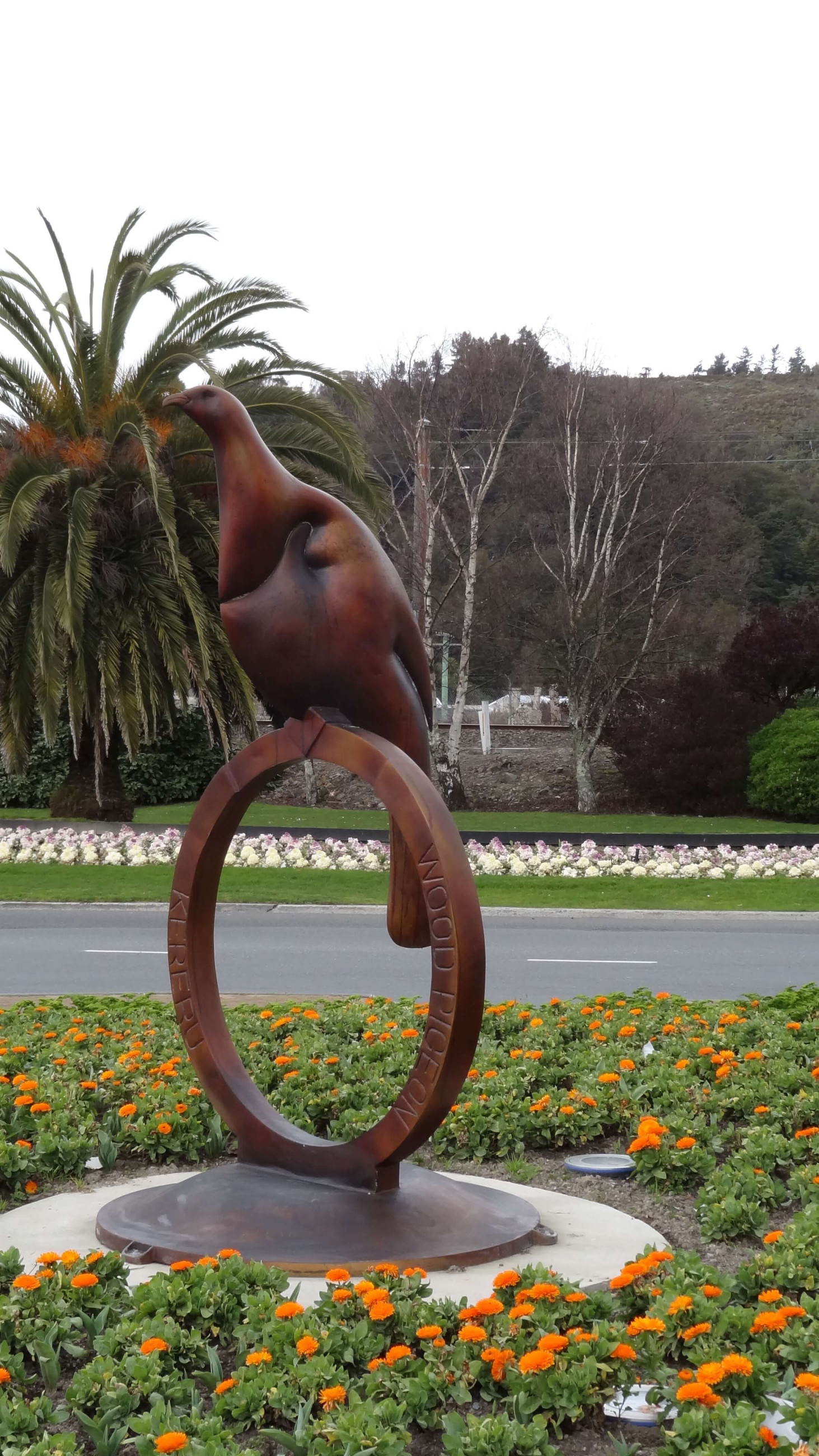
Swimmers in Space 1 and 2, 1988
NOT CURRENTLY ON SHOW
Location: formerly outside The Dowse Art Museum, 45 Laings Road, Lower Hutt
In the summer of 1987 to 1988 Dibble completed a four-month residency at The Dowse Art Museum in Lower Hutt. At the end of the residency an exhibition of the work he had completed was shown at The Dowse, titled “From Fire and Water”. The exhibition marked a departure for Dibble, with most of the sculptures in the show using a new technical method of working, in which metal sheets were cut and folded into various configurations. As a group they became known as “The Foldings”.
As part of the terms of the residency, a large work was made specifically for The Dowse, scaled from a small model. This work, Swimmers in Space, features two swimmers seen in profile.
Swimmers interested Dibble in this period. Steel swimmers had been a part of many of his large installations in the late 1980s and, when he began his larger bronze works in the year after The Dowse residency, his first two studies were of swimmers.
Swimmers in Space was mounted outside The Dowse until the building’s refurbishment in 2007. For a time, the work was re-installed on the Myrtle Street side of The Dowse, but was subsequently taken down and is now in storage.
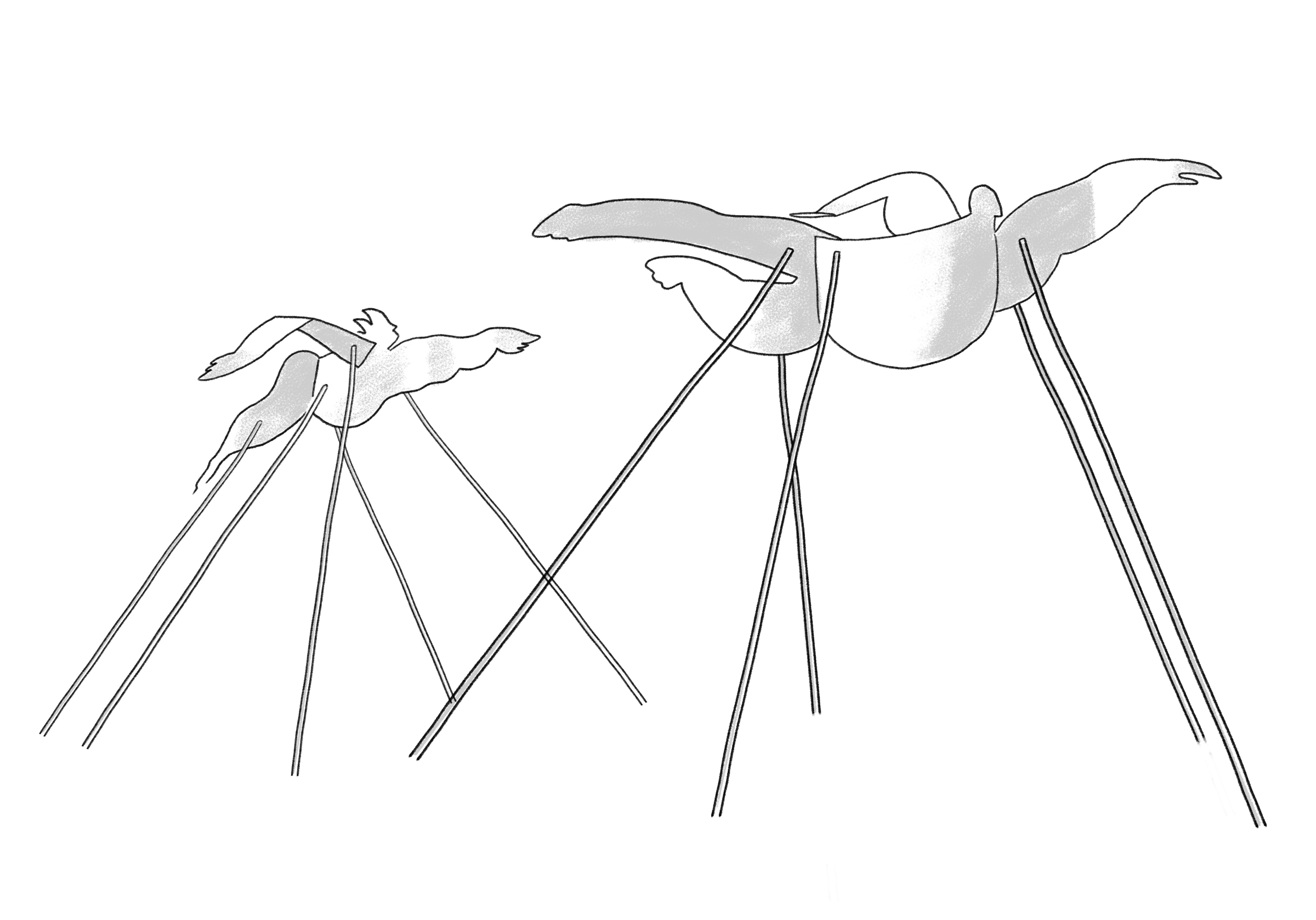
Looking and Listening for the Sea: Monument to the Hinterlands, 1992
Location: inside Begonia House, Wellington Botanic Gardens, 101 Glenmore Street, Kelburn, Wellington
In Dibble’s vast history of art, the period 1990 to 1993 was when he concerned himself with what was, essentially, storytelling.
He turned to stories told in his youth, of heroes and overcoming obstacles, bringing these to sculpture with a viewpoint that was profoundly different and his own. The stories are of a loosely woven narrative, the more wonderful for their spill into exuberance and humour.
The works from this period incorporated the idea of myths. Two creatures often made an appearance – the rabbit and the mermaid. Together they functioned as an odd sort of duo; the mermaids as hero figures – carrying to safety boats or a sheep slung across their shoulders - with the rabbit a silent on-looker. Rabbits and this mythical sea creature may seem an incongruous mix, but these are dreamy loose meanderings. Rabbits on boats were signs of good luck, and rabbits are creatures both cute and cuddly but also utterly destructive. Looking and Listening for the Sea: Monument to the Hinterlands plays on our fondness for a watery coast. The mermaid holds a giant shell to her ear, the trick we show children of hearing the sounds of ocean, while as nurturing protector she cradles a small fish.
This work was donated by a private buyer, to sit in the Begonia House within the Lady Norwood Rose Garden at Wellington Botanic Garden.
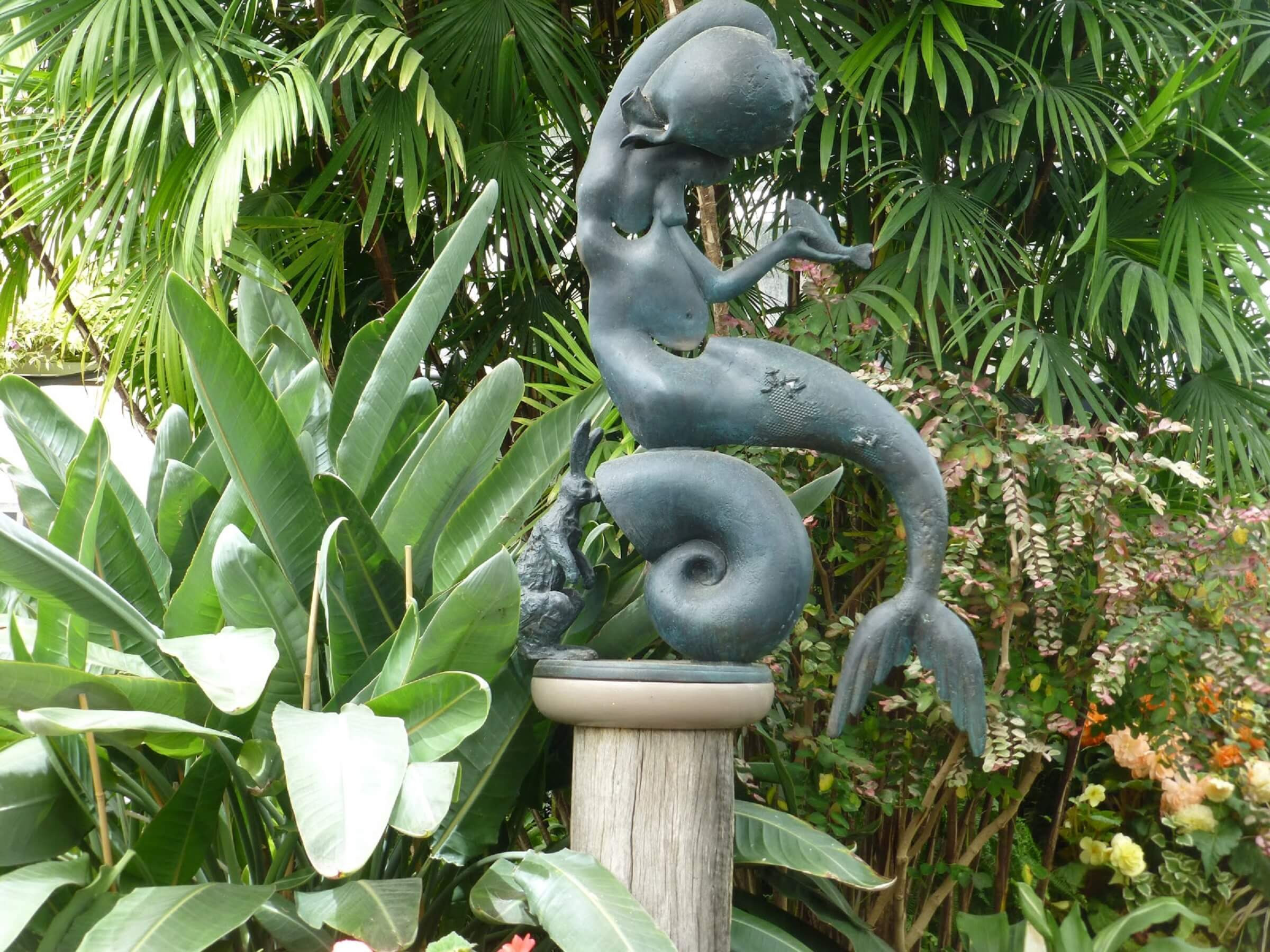
Fruits of the Garden, 2001
Location: Frank Kitts Park, Jervois Quay, Wellington
In Fruits of the Garden a female torso, balancing an apple, stands as a still form between curving serpentine leaves. It was part of a series of works in which Dibble explored the idea of New Zealand as a long untouched paradise. The torso references Eve, from the biblical garden, but also alludes to the busts that feature in European sculpture.
There is an element of jest in the forms: although they appear massive, viewed from the side they are of limited depth, more like a façade, similar to the imposing fronts on colonial buildings when there is nothing behind them.
The work was shown in Wellington in 2002 as part of an arts festival, in an outdoor group exhibition of 14 artworks titled “Changing Spaces” (named after a quote by Richard Serra about how artwork alters a site). In the exhibition sculptures were displayed throughout Civic Square and on the Waterfront.
The sculpture was purchased from this exhibition by the Lambton Quay Harbour Board and permanently installed in Frank Kitts Park.
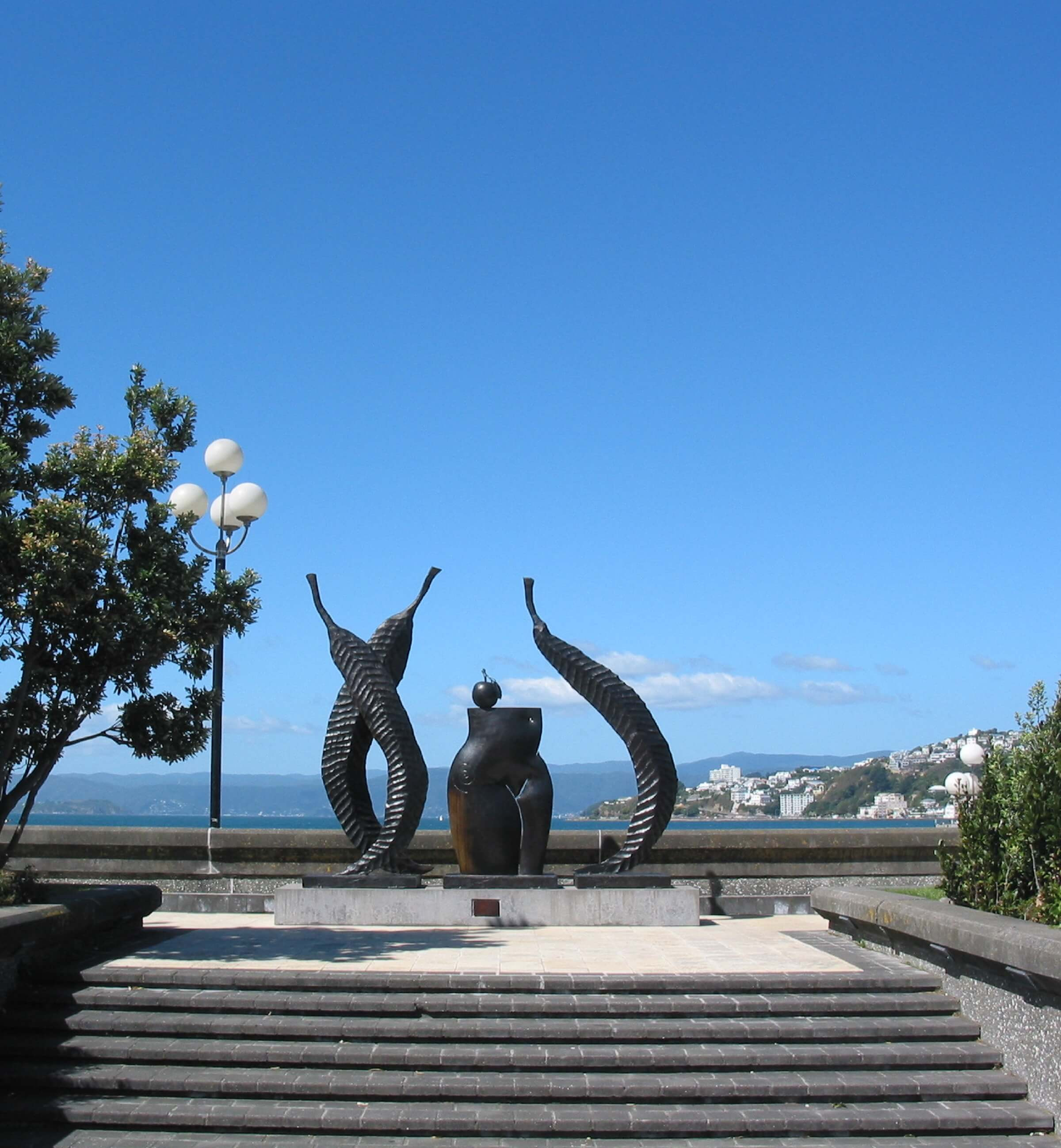
Under the Harbour, 2009
Location: outside Moore Wilson supermarket, corner of Tory and College Streets, Te Aro, Wellington
The Tory Street site on which Moore Wilson’s built their supermarket premises was originally home to Thomson, Lewis & Company, one of the main soft drink producers in Wellington. A water diviner discovered water at the site in 1926, and it is believed this water flows underneath Wellington Harbour, with its origins possibly in the Wairarapa. The water was of a consistent high quality and was used by the soda company for 53 years to manufacture their soft drinks.
When Thomson, Lewis & Company sold their business, the original bore was capped, but the bore water was still accessible inside Moore Wilson’s building. Often older men would come to the shop with glass flagons asking for water. When the business modified their building to create a fresh food section, they made a walkway, conveniently sited to allow people to cut through when heading back towards the waterfront, effectively making a public pathway created by private sponsors. Wanting to recognise the history of the site, they commissioned Dibble to make a sculpture that portrayed the story, and they installed a tap for people to freely take water.
The sculpture needed to fit along the wall of the walkway, with a piece towering above to an overhead car park, so it could be seen from three aspects: either from the store’s extension through the glass entrance, walking through the passageway, or looking down from the car parking areas above.
Dibble’s final design, made and installed 2009, is a sculpture with four components.
On the far right stands a figure, referencing the sculptures of Matisse, with fluid languid lines. Her stance is much like the models used in posters advertising soft drinks in the 1930s. The figure leans upon an enormous bottle, scaled up from the ones that would have been used at the former bottling plant. Next is a giant version of the divining rod, stretching up to the level above. Lastly a massive fish, referencing the legend of Māui fishing up the North Island, whimsically carries in its mouth a ribbon, which tells the story of the water travelling through its ancient route under seas and hills to reach this spot.
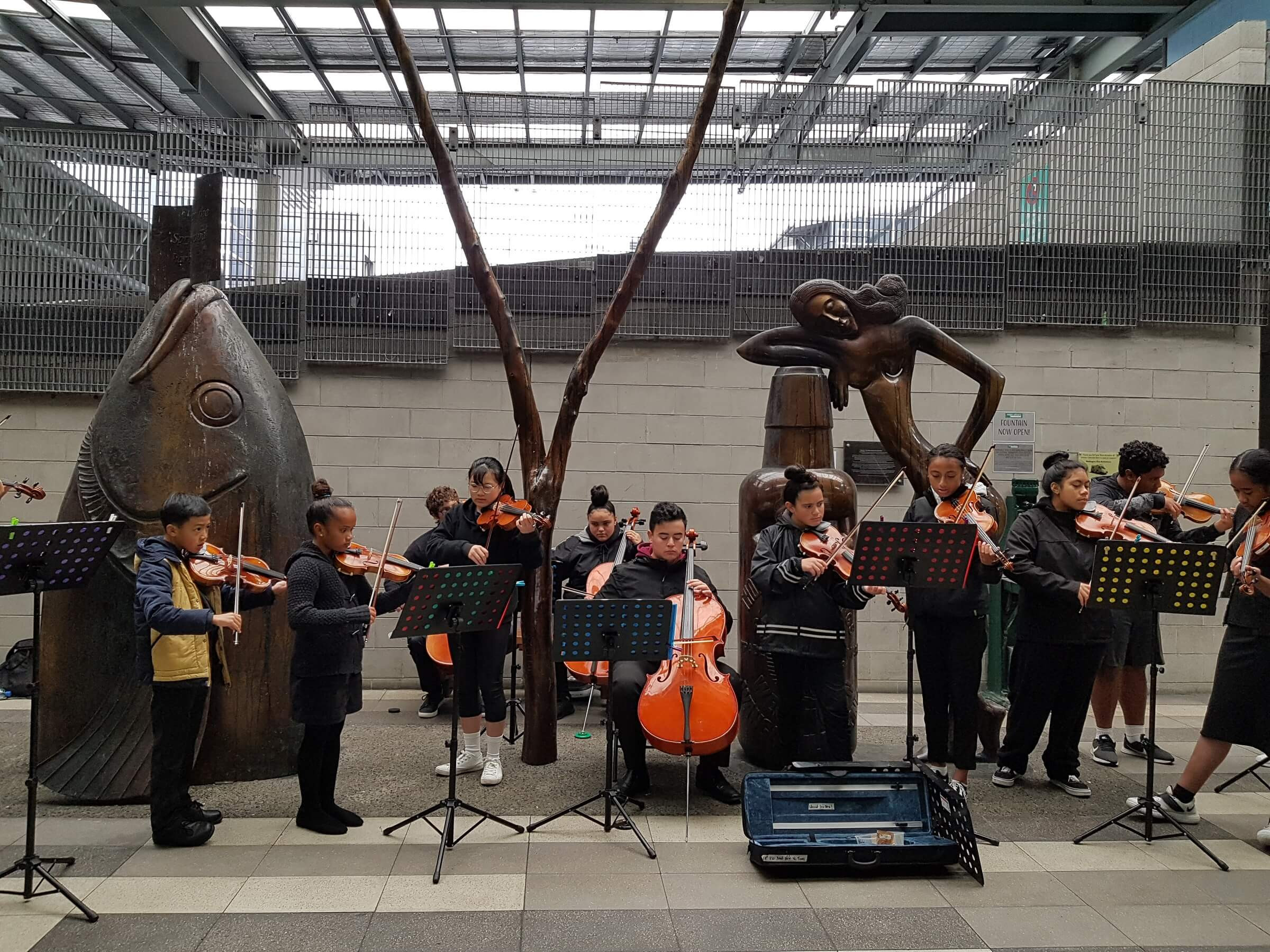
Down Under, 2000
Location: roundabout at the junction of Stewart Duff Drive, Broadway and State Highway 1
Patrons associated with Wellington International Airport commissioned Dibble to make a sculpture, to be funded from money donated in lieu of presents for the couple’s wedding. Their request was that the work be light-hearted and pay tribute to Wellington’s wind, something for which the city is notorious.
The work produced by Dibble, Down Under, is a figure of a woman standing acrobatically upside down on one grounded hand. Her hair blows across her face, and a bowed shape of leafy props supports her as she performs her stunt.
The title, Down Under, and her upside-down posture, are humorous references to her South Pacific home at the ‘bottom’ of the world, as seen from Europe. There is a headdress of leaves around her head, a bird (the native huia) comically perches on one of her legs, and a curling ribbon blows around her body.
She is mounted on a concrete plinth on the roundabout in front of the entrance to the airport.
